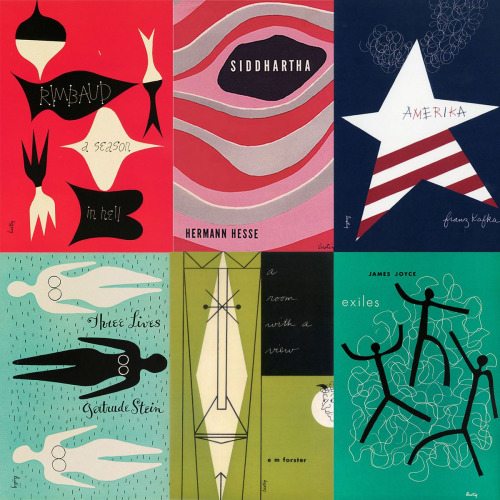
What is Mid-Century Modern?
The term “Mid-Century Modern” was coined by author Cara Greenburg in a 1984 book of the same name. The term describes trends in design architecture, furniture, and graphic design from the middle of the 20th century, about 1933 to 1965. Because the style is defined by an era, rather than a specific art movement, it includes a number of varying, and sometimes contrasting, looks.
Mid-Century looks can be cool, clean and sophisticated. Mid-Century can be colorful, playful and downright zany. Sometimes Mid-century style is angular and futuristic, other times it’s curvy and streamlined. The look that defined consumer culture in post-war America was shaped by many factors, from teen car culture to the space race, and encompassed a range of design principles. New consumer products, such as cars, televisions and microwaves, presented opportunities for originality in industrial design. Scientific advancement inspired some looks, as did the influence of European designers. Functionality, sleek lines, minimal ornamentation, bold colors and contrasting elements are fundamentals of mid-century design. Today, Mid-Century style is experiencing a revival, thanks to shows like Mad Men and applications like web design.
The Backstory:
The postwar years in America were a time of unprecedented growth. Prosperity and commercialism reigned. As industry boomed, domestic life flourished as well, with increasing suburbanization, birth rates and home ownership. A certain level of comfort and style became accessible to the middle class. New methods of mass production also made it possible to manufacture goods like furniture and automobiles more cheaply and using new materials, such as plastics. All of this added up to an increased demand for good design: attractive packaging to encourage consumption, easily constructed modular homes to fill the growing suburbs, more streamlined automobiles and more stylish and functional furnishings.
Much artistic talent and resources were poured into the development of a uniquely American style, one which reflected high energy, abundance. Scientific advances made possible the use of new materials, from polyester to formica, and inspired a futuristic aesthetic. At the same time, Scandinavian Design, with its sleek lines and minimalism, became popular and came to influence the iconic look that defined Mid-Century style. Common aesthetic elements in both styles included bold looks, flat colors, synthetic materials and geometric forms.
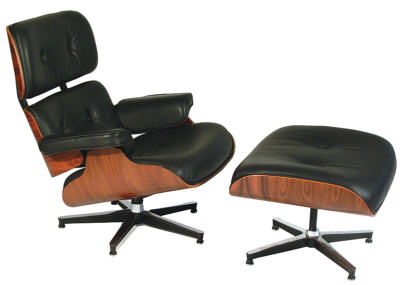
Breakthrough Artists: Charles and Ray Eames
Charles (1907–1978) and Ray (1912–1988) Eames were an American husband and wife creative team whose designs established a new, lasting look in furniture. Neither Charles nor Ray held degrees in design. Ray’s formal training was in painting. Charles had briefly studied architecture at Washington University before being expelled for his too-modern views (such as endorsing the work of Frank Lloyd Wright). The two met when Ray was hired to assist Charles Eames and Eero Saarinen in preparing their winning designs for the Museum of Modern Art’s Organic Furniture Competition. The two collaborated to create furniture that was sleek, simple, functional and made innovative use of industrial materials. Throughout their careers, Charles was credited as the sole creator, in spite of Ray’s contributions. The Eameses did not limit themselves to furniture- they also worked in industrial and graphic design, textiles, toys, film and fine art. Being both business and life partners, they also viewed their work as part of their lifestyle. The Eamses called their design endeavors “serious fun,” and they both lived and worked in their unique studio/home in Los Angeles.
The Eames home and studio was itself an original creation, and has been preserved as a landmark of modern architecture. Called the “Case Study No, 8” house, the building was built in 1949 for an architecture competition series sponsored by Arts and Architecture Magazine. The structure is entirely rectangular and covered with panels of white and primary colors set in black frames, giving it an appearance similar to one of Mondrain’s grid paintings or a graphic design from the Dutch art movement, De Stijl. Only prefabricated industrial materials were used in its construction, making it possible to build the Case Study No. 8 house by hand in a matter of days. The house looks sleek and bold yet harmonious, visual qualities emblematic of Mid-Century Modern. The Eames’ furniture designs demonstrate the same principles of minimalism and attention to materials. They are famous for the pioneering technologies in modern furniture, such as the use of molded plywood, fiberglass, plastic resin and wire mesh. Original Eames furniture pieces command fabulous prices today, but they were originally designed for mass production and popular use in everyday life. One notable exception is the Eames Lounge Chair, which was created for the high-end market. Made from leather and molded plywood, this stylish and comfortable chair and ottoman set is perhaps the team’s most iconic piece. An example of the set is housed in the permanent collection of the Museum of Modern Art in New York. It is still in production today, along with any number of imitations by other brands.
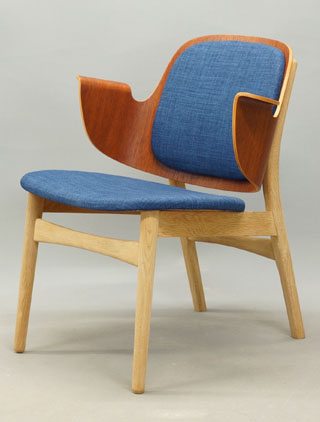
Profile in Style: Scandinavian
European design concepts influenced many American designers working in the postwar era, and many integrated elements of Scandinavian Style. The concept behind the movement was to democratize design by creating functional, unadorned pieces using natural materials. The look was characterized by simplicity, smoothness, flowing contours and organic shapes. Minimalism, openness and muted colors are hallmarks of the Scandinavian style. Popular examples of Scandinavian design are the iconic mod “egg chair” and “tulip chair”, with their sleek, curvaceous and ergonomic forms. American architects were also inspired by the movement. The International Style, an American movement was inspired by European architecture trends: clean simplicity, functionality and integration with the natural environment. The International style was developed with the goal of creating a functional and beautiful urban utopia, but the postwar years saw architects using the movement’s design principles in suburban construction.
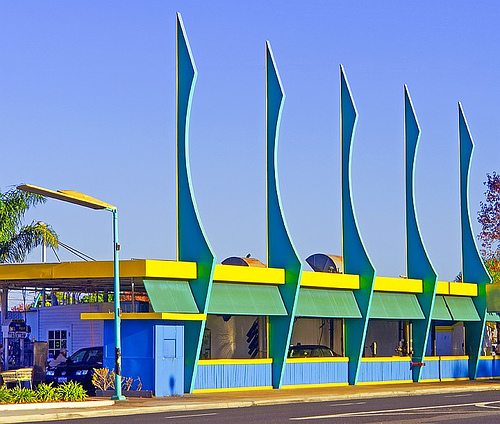
Profile in Style: Atomic Age
The postwar years coincide with the Space Age and the Atomic Era. This was a time of both optimism and anxiety. The space race captivated the country, while also condensing Cold War fears. Atomic science held the promise of unlimited power while also creating the possibility for nuclear warfare. The awareness of scientific power in the poplar imagination was reflected in futuristic designs now called Atomic Age style. Geometric forms, some even reflecting the shape of atomic structures or gallaxies, became popular motifs in industrial design, as did free-form organic shapes. The iconic kidney-shaped swimming pool and boomerang-shaped coffee table are examples of the free-form, contoured profiles popular at this time. Textiles, ceramics and countertops employed patterns based on the same organic forms, often incorporating contrasting linear elements. In architecture, sleek and sloping or low profiles were favored, and perpendicular features were used to create a bold, futuristic aesthetic. The more extreme form of this popular style, featuring heavy aerospace influences, is known as Googie architecture, and inspired the look of the Jetsons cartoon.
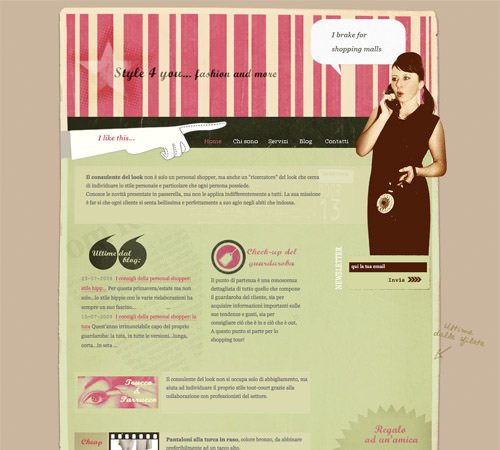
Mid-Century Style in Design Today
The aesthetics of the postwar years are back in style in a big way. From TV’s Mad Men to popular fashion’s Mod Cloth brand, Mid-Century looks are everywhere in mainstream culture, evoking retro cool and cozy nostalgia. Mid-Century style can be seen in contemporary illustration, fashion and architecture, though without a doubt it is most widely and recognizably present in graphic design and furniture trends. The looks popular in the fifties and sixties are again setting trends in furniture, interior design, posters, packaging and more. Popular fashion retailers such as ModCloth and eShakti have focused more on Atomic Age style in fashion, recreating adapting bold, mod looks for the contemporary woman’s silhouette. Interior design was a major focus of design in the postwar years, as sophisticated styles became more accessible through decreased production costs, rising middle class salaries, a peacetime return to domesticity and a culture of democratization in design and art. The furniture of the era is distinctive and recreations are popular, from wacky retro lava lamps and loveseats to sleek and sophisticated coffee tables and arc floor lamps. Thanks to companies such as Design Within Reach, West Elm and IKEA, vintage-looking Scandinavian Style furniture pieces are available at every price point.
Mid-Century style in contemporary graphic design is ubiquitous, and with good reason. The era’s focus on both action and minimalism yields a tendency towards eye-catching and clear visual communication. A variety of aesthetics could be seen at different times an in different design contexts, but a few commonalities prevailed: flat, contrasting colors, simple geometric shapes, sweeping or angular forms and unusual, artistic fonts. These elements create visual interest without compromising the clarity of the content, and are perfectly suited to web design and digital graphics. Even the wide horizontal orientation and use of grid-based layout popular in the graphic design of the era lends itself easily to the computer screen format. Popular packaging and branding also make use of Mid-Century color palates and the era’s flat, geometric designs, while industrial designs, from cars to compost bins, are often made functionally chic through the use of curvaceous retro forms.
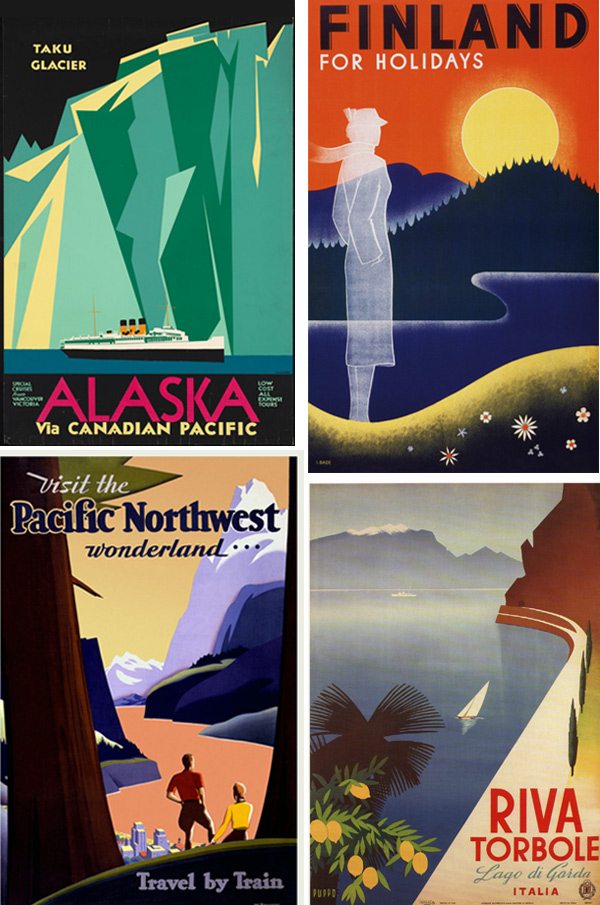
Try it: Tutorials
Expand your design education; use modern tools to create classic Mid-Century looks with these online design resources.
